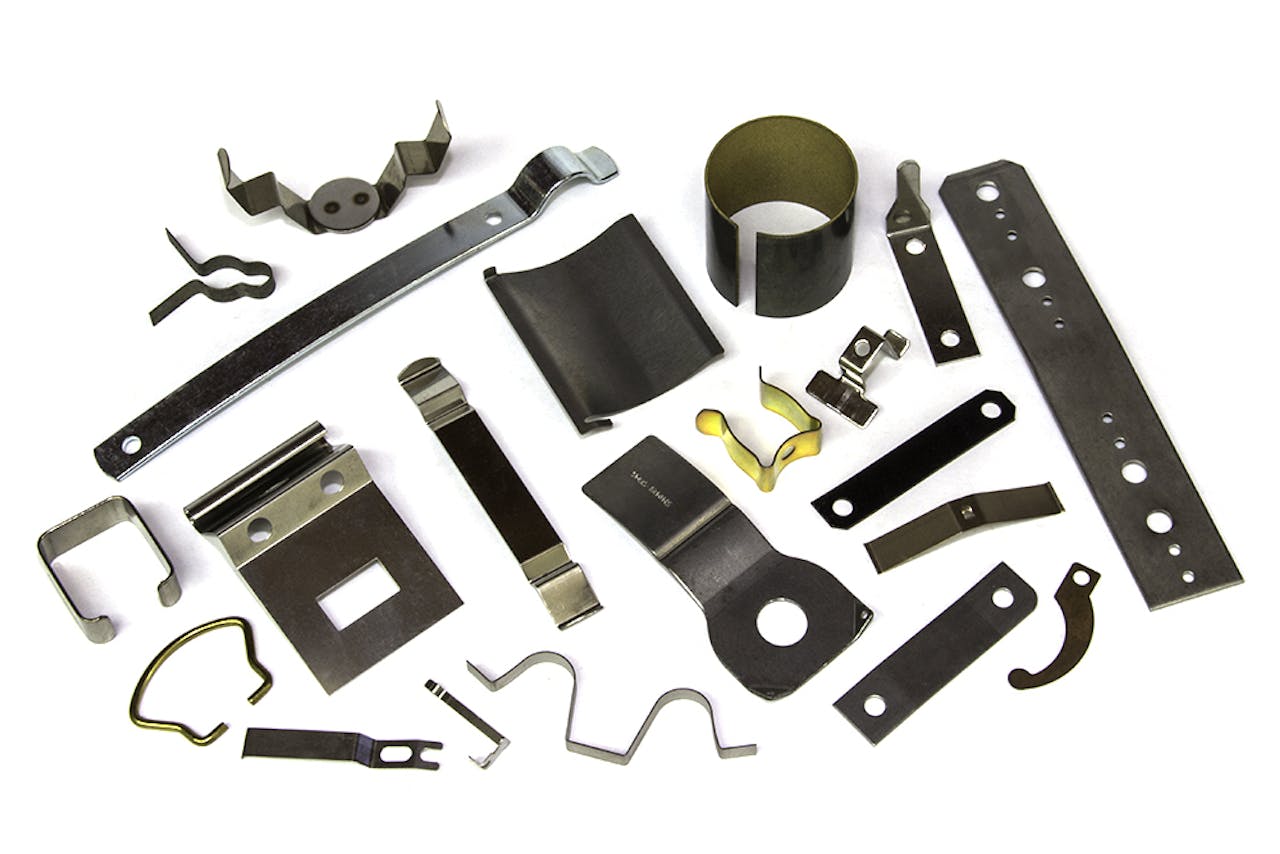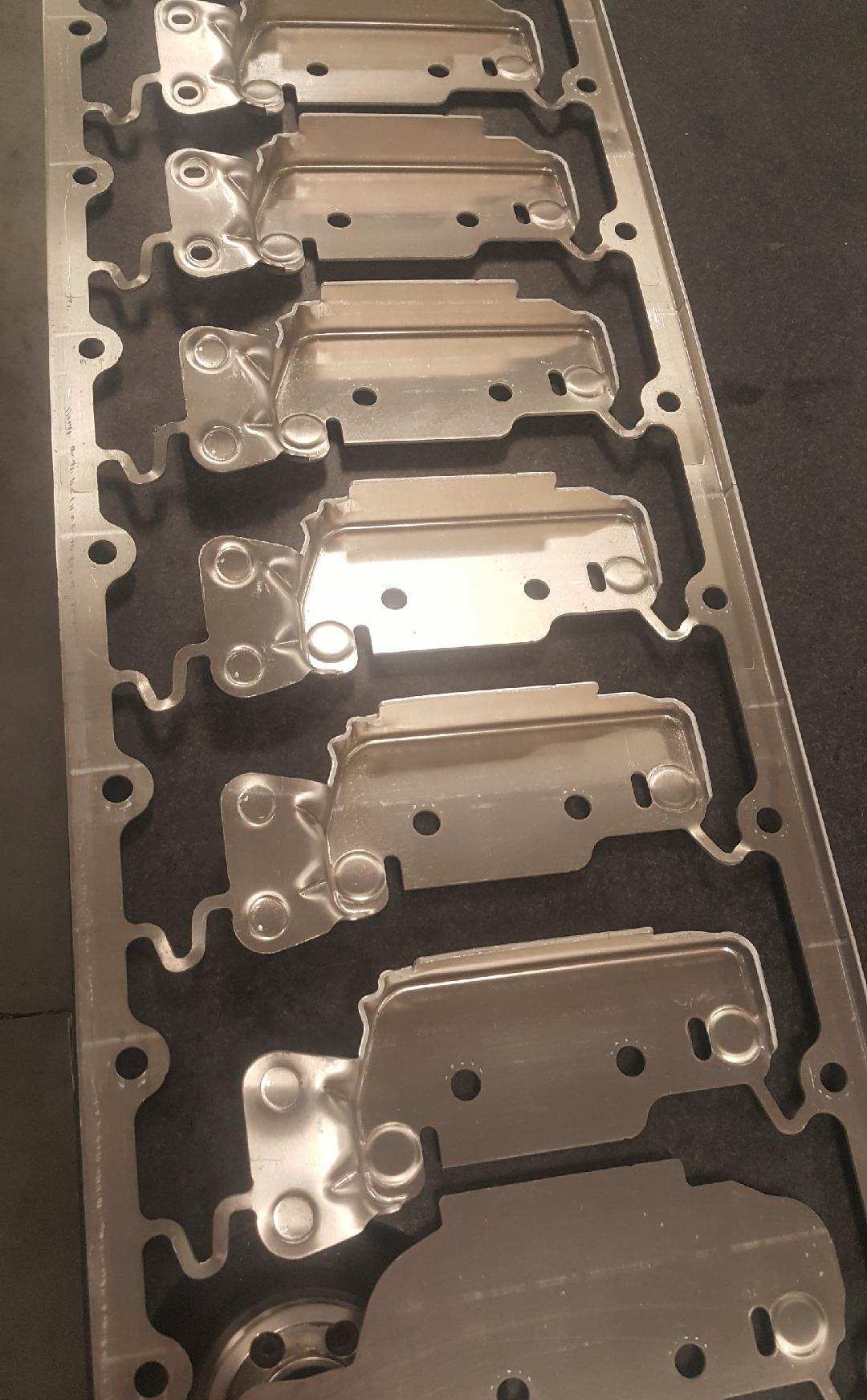Checking Out the Globe of Steel Stamping: From Design to Production
Within the realm of manufacturing, metal stamping attracts attention as a precise and effective method for shaping metal sheets into different types with exceptional consistency. From the first layout stage where intricate patterns take shape to the intricate production processes, steel marking is a mix of virtuosity and design. Delving right into this globe introduces an intricate interaction of creativity and technical mastery, offering a glimpse into a world where technology fulfills workmanship.
Background of Metal Stamping
Metal stamping, a widely made use of production procedure today, has a rich history that dates back to old times (Metal Stamping). The origins of metal stamping can be mapped to old people such as the Egyptians, who used marking strategies to decorate fashion jewelry and ornaments with detailed layouts. With time, steel stamping evolved, with civilizations like the Greeks and Romans utilizing it for producing coins and attractive products

In the 20th century, metal stamping proceeded to evolve with the integration of automation and computer system mathematical control (CNC) innovation. These advancements even more raised the efficiency and accuracy of steel stamping procedures, making it an important component of modern-day manufacturing throughout industries such as auto, aerospace, and electronic devices. Today, steel stamping continues to be an important production procedure, combining custom with development to satisfy the needs of a constantly advancing industry.
Layout Considerations and Prototyping
Layout factors to consider in steel marking consist of product option, component geometry, tooling layout, and manufacturing feasibility. Tooling design plays a significant function in the success of metal stamping projects, affecting part accuracy, tool long life, and manufacturing effectiveness.
Prototyping is a critical stage in the metal marking procedure that allows designers to evaluate the design, confirm manufacturability, and make needed modifications prior to full-blown production. By very carefully thinking about hop over to these guys layout find out here now elements and making use of prototyping, makers can improve the steel stamping procedure and accomplish high-quality, economical production results.
Tooling and Equipment Fundamentals
Considering the crucial role that tooling design plays in the success of metal stamping tasks, recognizing the essential devices and tools required is vital for accomplishing effective production outcomes. Fixtures hold the steel in area throughout the stamping process, guaranteeing accuracy and repeatability. Investing in top quality tooling and equipment not just boosts manufacturing effectiveness but additionally leads to greater precision, decreased waste, and general cost financial savings in metal marking operations.
Production Process and Quality Assurance
Efficiently taking care of the production process and applying robust top quality control measures are necessary for ensuring useful reference the success of steel stamping jobs. The manufacturing process in metal marking involves a series of actions that must be thoroughly worked with to accomplish optimal outcomes.
Quality control in steel stamping is critical to deliver products that meet the called for requirements. By keeping rigorous quality control requirements, suppliers can maintain their track record for delivering top quality steel marked products.
Applications and Sector Insights
In the realm of metal stamping, the successful application of production processes and high quality control procedures straight affects the effectiveness and reliability of various industry applications and offers beneficial understandings right into the field's functional characteristics. In addition, steel marking assists in the manufacturing of numerous home appliances, including refrigerators, washing machines, and stoves, by giving cost-efficient remedies for making sturdy and intricate components. Comprehending the applications and market insights of metal stamping is essential for maximizing manufacturing procedures and improving product quality throughout various markets.

Verdict
Design factors to consider, prototyping, tooling, devices, manufacturing processes, and top quality control are vital aspects of steel marking. With its extensive applications and sector understandings, steel stamping proceeds to be a versatile and reliable manufacturing procedure.